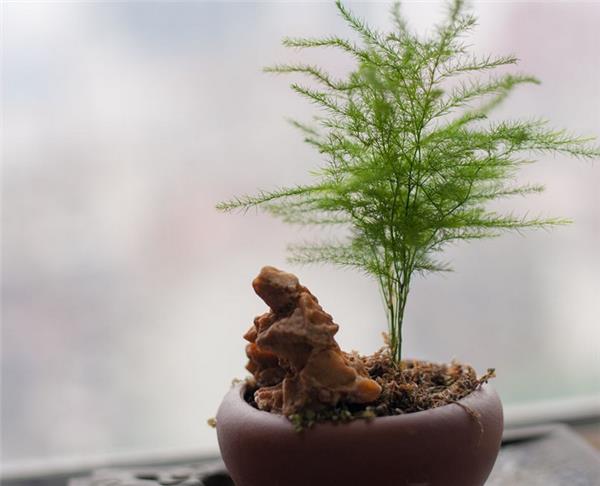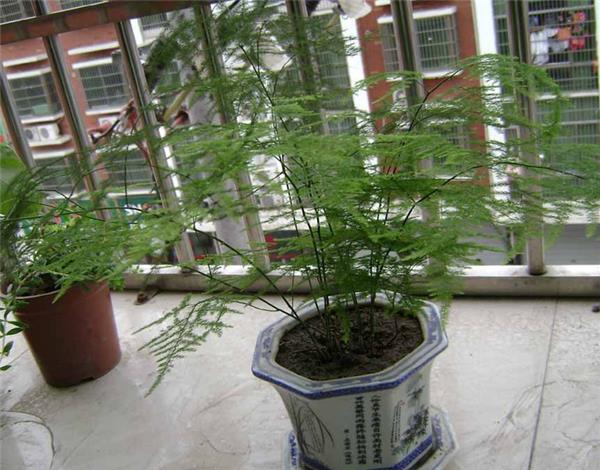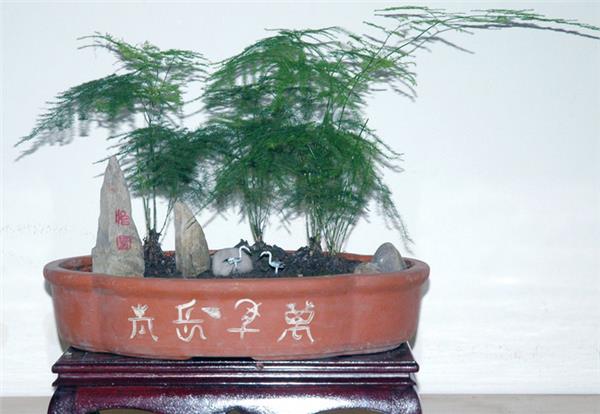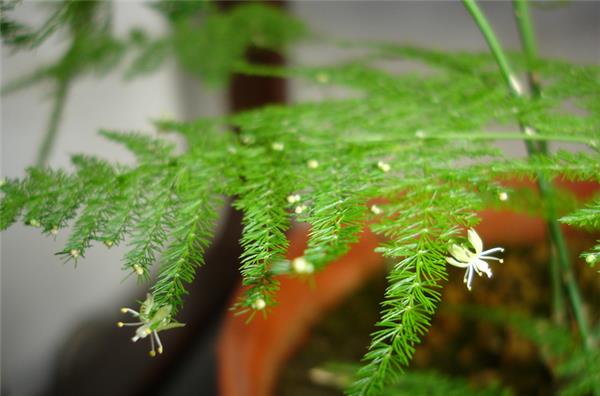How does asparagus spend the winter?
Asparagus is a perennial vine resident green herbaceous flower, many like it very much, so do you know how to spend the winter?

How does asparagus spend the winter?
Asparagus originates in southern Africa, is not cold-resistant, and can not survive the winter outdoors in the north. Asparagus should be moved indoors in time when the temperature drops, and the room temperature should be kept above 15 ℃. The flowerpot should be placed on the sunny windowsill and the leaves should be at a distance from the glass to prevent the leaves from being frozen and dried yellow.
Properly watered, asparagus adapts to grow in a humid environment. Dry air in winter in northern China is extremely disadvantageous to the growth of asparagus, which is the main reason for the dry tip of asparagus. Spray on the leaves at noon every day to keep the branches green. Asparagus likes to be wet, but avoid watering too much, basin soil is too wet for a long time, it is easy to rot roots, branches and leaves turn yellow, and even cause plant death; but if the basin soil is too dry, it will also cause yellow leaves or scorched tips. Therefore, keeping the basin soil semi-dry and wet can make the branches and leaves of asparagus green and evergreen all the year round. The water quality is better with fresh water which does not contain salt, alkali and other harmful substances. Use tap water for 1 to 2 days so that the water temperature is close to room temperature.
Reasonable fertilization, thin liquid fertilizer can be applied once every half month, mainly nitrogen and potassium fertilizer. It is more ideal to use compound flower fertilizer indoors. Reasonable fertilization can promote the branches and leaves to be green and straight, and improve the ornamental value. Appropriate amount of light asparagus is suitable to grow in semi-shade environment. In the case of weak indoor light in winter, it should be placed in the sunny shelter.
Beware of smoke and dust, asparagus has weak resistance to smoke and dust. If you use a stove for heating in winter, in addition to reducing smoke and dust as much as possible, you should be ventilated at noon on a sunny day to keep the air fresh.

Matters needing attention in asparagus culture
1. To prevent excessive sunlight, it is appropriate to put it in the semi-shade. Although asparagus likes warmth, its leaf tips are easy to wither in strong light.
2. Avoid watering too much or too little. Asparagus likes to be wet, but avoid getting too wet. If the basin soil is too wet and the drainage is not smooth, it will make the roots retting. Watering too little or no watering will cause large evaporation and small absorption of asparagus, resulting in leaf scorch tip shedding.
3. Prevent the pollution of harmful gases. Asparagus loves a clean and well-ventilated environment. If stimulated by harmful gases such as smoke, gas and pesticides, the leaves will turn yellow, curl and even die.

Method of pruning asparagus
1. Missing pruning of leafy branches
When the growth position of the leafy branch on the main branch of asparagus is not ideal or is missing for some reason, short pruning can be carried out in the appropriate position of the main branch, pay attention to the hidden buds on the branches during pruning, do not prune off, and force the hidden buds there to germinate. In general, the height of truncation is the height of leafy branch germination, and the position of prickles on the branch is the location of leafy branch germination, and the thicker the branch is, the higher the germination rate of hidden bud is.
2. Renewal and pruning of the whole plant
If the branches and leaves of the whole asparagus grow poorly due to strong sunburn or dry basin soil, lack of fertilizer and some unknown reason, the whole plant can be renewed and pruned. During renewal and pruning, all the leafy branches of asparagus can be cut off, but attention should be paid to the inverted thorns on the branches, which determine whether the distribution of the remaining branches is uniform. Asparagus growth season pruning is generally high and easy to sprout new branches, and the amount of water should be reduced appropriately after pruning, and the basin soil must not be made too wet, otherwise it will lead to pruning failure.
3. Pruning of vine branches
Vine branches are generally weak and slender. If you don't want to leave seeds, make asparagus look good, and it can be cut off from the root at one time. If you want to increase the number of leafy branches or fill a vacancy, you can cut it short in a certain position, and pay special attention to the comprehensive management of small fat when pruning. Asparagus with plant-shaped leafy branches dense, high and low scattered is the best. However, after 3 to 4 years of cultivation, the tall vine branches, blooming and fruiting are no longer suitable for indoor viewing and must be pruned.

The relevant knowledge of asparagus how to spend the winter is introduced here today. I hope the above content can be explained to everyone!
Related
- Wuhan Hospital Iron Tree Blooming Result Was Instantly Frightened by the Gardener Master
- Which variety of camellia is the most fragrant and best? Which one do you like best?
- What is the small blue coat, the breeding methods and matters needing attention of the succulent plant
- Dormancy time and maintenance management of succulent plants during dormancy
- Minas succulent how to raise, Minas succulent plant pictures
- What are the varieties of winter succulent plants
- How to raise succulent plants in twelve rolls? let's take a look at some experience of breeding twelve rolls.
- Attention should be paid to water control for succulent plants during dormant period (winter and summer)
- Watering experience of twelve rolls of succulent plants
- Techniques for fertilizing succulent plants. An article will let you know how to fertilize succulent plants.



